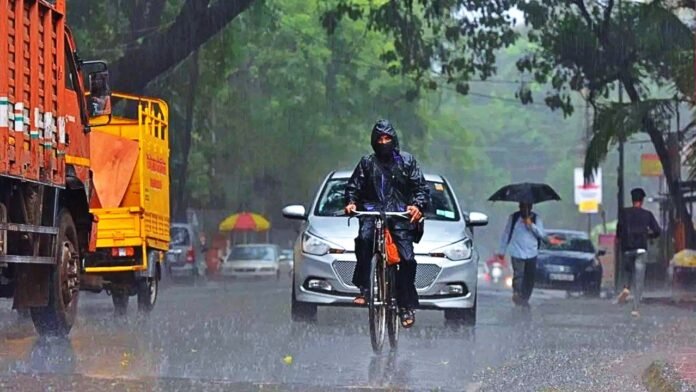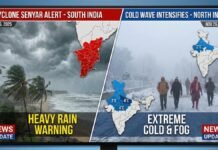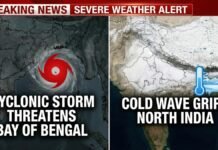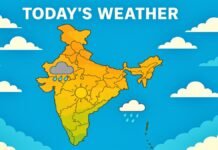
Key Points
- IMD predicts above-normal rainfall across India in July good news for farmers
- Day and night temperatures likely to be below average in many regions
- Flood warnings issued for Uttarakhand, Haryana-Chandigarh-Delhi, and parts of Central and East India
- June saw 8.9% more rainfall than normal, with North-West and Central India getting the highest surplus
- Monsoon rains crucial for Kharif crop sowing and India’s agricultural economy
New Delhi: The Indian Meteorological Department’s (IMD) latest monsoon forecast brings a wave of optimism for millions of Indian farmers. According to the IMD, July 2025 is set to see rainfall exceeding the long-term average, providing the much-needed water for paddy transplantation and other Kharif crop sowing activities. Notably, the department also forecasts below-average day and night temperatures for much of the country, offering relief from the scorching summer.
Rainfall Surplus Expected, A Boon for Agriculture
July is the heart of India’s monsoon season, with an average of 280.4 mm of rainfall based on data from 1971 to 2020. This year, the IMD projects rainfall to reach 106% of the long-period average, following a June that already saw 8.9% above-normal precipitation. The regional breakdown for June reveals:
- North-West India: 42.2% more rain than normal
- Central India: 24.8% above normal
- South Peninsula: 2.7% below normal
- East & North-East India: 16.9% below normal
The timely and abundant rainfall is crucial, as 51% of India’s agricultural land depends on monsoon rains, which contribute to 40% of the nation’s total food production.
Flood Warnings for Vulnerable Regions
While the forecast is largely positive for agriculture, the IMD has issued flood alerts for several regions:
- Uttarakhand, Haryana-Chandigarh-Delhi
- East Central India: Odisha, Telangana, Chhattisgarh, Vidarbha, and parts of Maharashtra
IMD Director General M Mohapatra emphasized the need for constant vigilance in hill states and river basin areas, especially in Uttarakhand, where major rivers like the Ganga and Yamuna originate and flow through densely populated towns and cities. Authorities are urged to monitor dams and river levels closely to prevent disaster.
Northeast and Southern Peninsula May See Deficit
While most of the country will benefit from surplus rainfall, the IMD warns that Northeast India, parts of East India, extreme southern peninsular regions, and some areas of North-West India may experience below-normal rainfall in July. This could impact local agriculture and water availability in these regions.
Temperature Trends: Cooler July Ahead
The IMD also predicts that July temperatures both day and night will be below average in many regions, continuing the trend from June, which was among the coolest Junes in recent decades. However, some areas in Northeast India, North-West, East, and the Southern Peninsula may still experience higher-than-normal temperatures.
- June 2025 facts:
- Average maximum temperature: 34.11°C (36th lowest since 1901)
- Average minimum temperature: 24.88°C (86th lowest)
- Overall average temperature: 57th lowest on record
Monsoon’s Critical Role in India’s Economy
The monsoon is the lifeblood of Indian agriculture and rural livelihoods. With 28 cm of rainfall typically falling in July alone, this period is crucial for sowing paddy and other Kharif crops. A good monsoon not only boosts crop yields but also strengthens the rural economy and food security.
IMD’s Advice: Stay Prepared and Vigilant
While the monsoon brings hope, the IMD urges state governments and local authorities to remain alert for possible floods, especially in vulnerable hill and river basin regions. Farmers are advised to make the most of the favorable conditions for sowing, while also staying updated on weather alerts.




















































